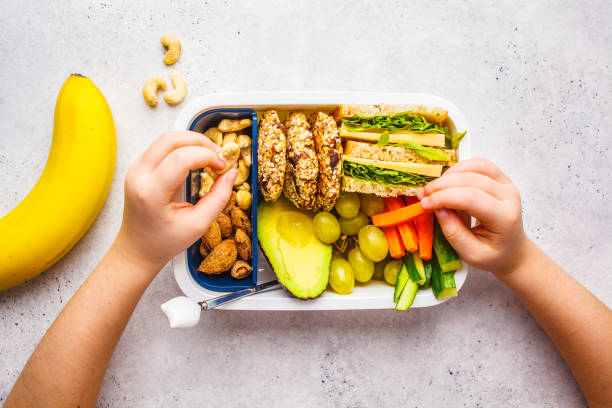You Feel What You Eat
Most people’s eyes glaze over when they see the word” diet”, and frankly the word is EVERYWHERE. Almost every magazine in the checkout aisle has a headline referring to diet and each month some nutritional guru publishes a “new” diet for the ages. This rampant oversaturation causes many people to become desensitized to the notion of going on a diet altogether.
With my patients, I try to keep the 4-letter word out of our conversation and instead refer to it as a “nutritional program”. Because, whether you want to believe it or not, you feel what you eat! And if your main goal is to simply feel better (and why wouldn’t it be) then you need to think about the kinds foods you eat.
Inflammation: Your Body’s Way of Saying “Stop It!”
The old adage states “You Are What You Eat” but truly, and more likely, you actually feel every bite you take in every part of your body. Certain foods can stimulate an inflammatory reaction in your body, which shows up everywhere, but definitely in your joints.
Diet and Arthritis
Arthritis is the most common cause of disability in the United States. An estimated 46 million U.S. adults (about 1 in 5) report doctor-diagnosed arthritis, according to annual estimates. As the U.S. population ages, these numbers are expected to increase sharply. In fact, the number of adults with doctor-diagnosed arthritis is projected to increase to 67 million by 2030. Common symptoms include pain, aching, stiffness, and swelling in or around the joints.
Arthritis is all about inflammation in the joint tissue. Living with it can be quite a challenge and finding the right cocktail of anti-inflammatory drugs can be difficult also. One thing you can do that really works to help with the pain is eliminate certain foods that can boost your body’s inflammatory response.
Foods that may aggravate arthritis and should be minimized are:
• Foods high in saturated fat like dairy, red meat, and baked foods
• Coffee
• Sugary foods
• Refined grains like pasta, white rice, and white breads
• Refined or processed foods (if it’s in a box or can, it’s refined)
• Alcohol
Foods that help lower inflammation in the body are:
• Vegetables and certain fruits
• Whole grains such as brown rice and bulgur wheat
• Sources of omega-3 fatty acids, like fatty fish such as salmon, fish oil supplements and walnuts
• Lean protein sources like chicken, turkey, or beans
• Green Tea
Diet and Osteoarthritis
Osteoarthritis is the gradual degeneration of joint surfaces, caused by overuse and under repair. Over time, the wear and tear of cartilage progresses to the point that it’s worn thin. Symptoms include pain, stiffness, and swelling in major joint areas like the hip, knee, and hands.
Although osteoarthritis is not a matter inflammation, a good nutritional program is key to avoiding this painful condition.
Keeping the weight off is not only great for your self-image and health, it’s also great for your joints! Clinical research has shown that people who are 20 percent or more over their normal body weight have more problems with osteoarthritis. Weight-bearing joints are most affected by the extra weight, especially the knees, hips, ankles, and spine. Unfortunately, once the joint pain begins, a more sedentary life results which means more weight gain putting more pressure on the joints. It’s a vicious cycle. A nutritional program designed to lose weight, may be in order in this situation.
When Diet Can’t Solve Everything
As stated before, some forms of arthritis don’t necessarily respond to anti-inflammatory food or medicines. Although being fit can help keep the weight off your joints-sometimes they just wear out and you need an extra boost from outside help!
The Outside Help!
Prolotherapy: This unique therapy, although over 50 years old, has recently gained more interest because of the nature of its success. Prolotherapy works two-fold:
• Short-term: Prolotherapy tightens the ligaments around a joint, which helps with immediate pain relief.
• Long-term: Prolotherapy stimulates the growth of tissue in an injured area, making it stronger and more viable over time.
Prolotherapy incites the body to naturally do what it’s supposed to do on its own when injured: form healthy, strong, flexible ligament or tendon tissue. Unfortunately, our bodies do not always respond the way they are supposed to and need added stimulus to get the job done. Prolotherapy is that added motivation or encouragement on a cellular level.
PRP Therapy: Platelet-Rich Plasma injection therapy, although not new, is raising a lot of eyebrows in the medical field as of late as a viable technique to relieve pain and produce better results in healing injured and overused tendons and ligaments. A knowledgeable and trained physician injects your own platelets (growth factors) from your blood into the injured area, which stimulates a healing process and in turn decreases pain in the area.
You Feel What you Eat, and eating less and nutritionally enhanced foods will definitely put you on the road to feeling much, much better.
Suffering from chronic joint and tendon pain and want to learn more about Prolotherapy and PRP Injections?




